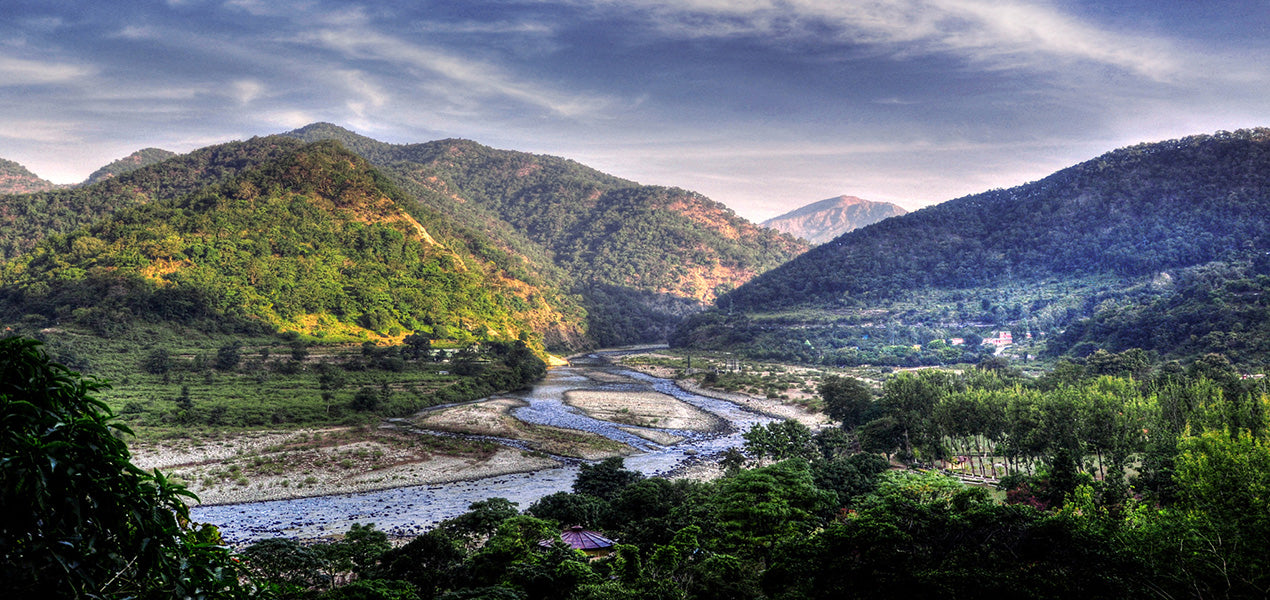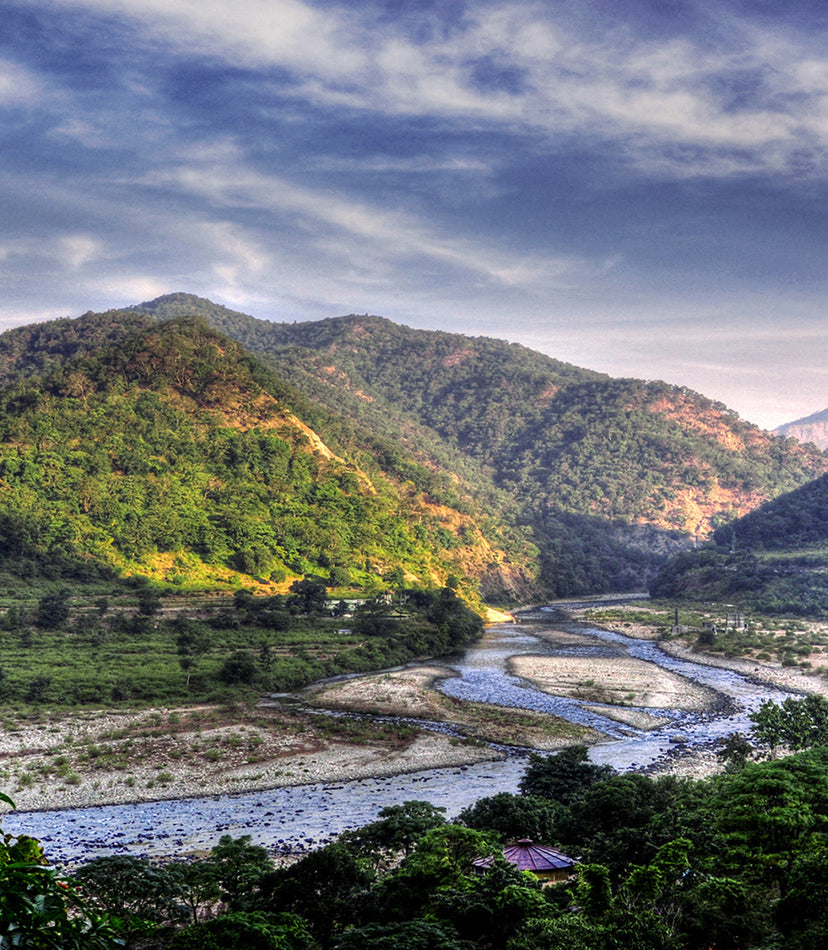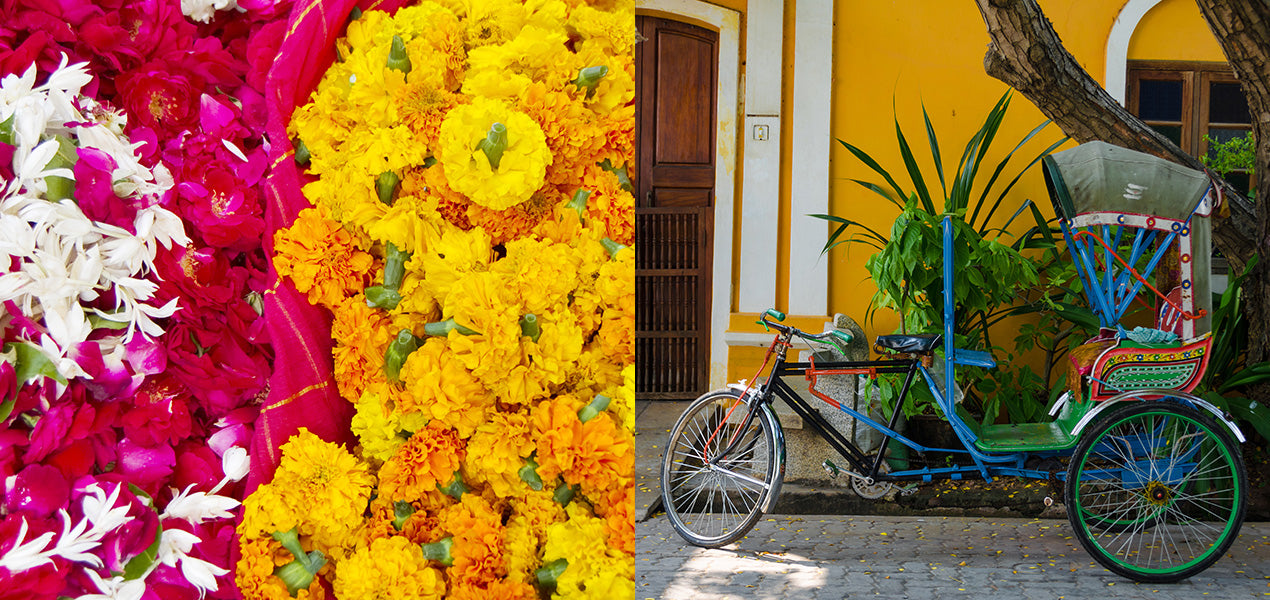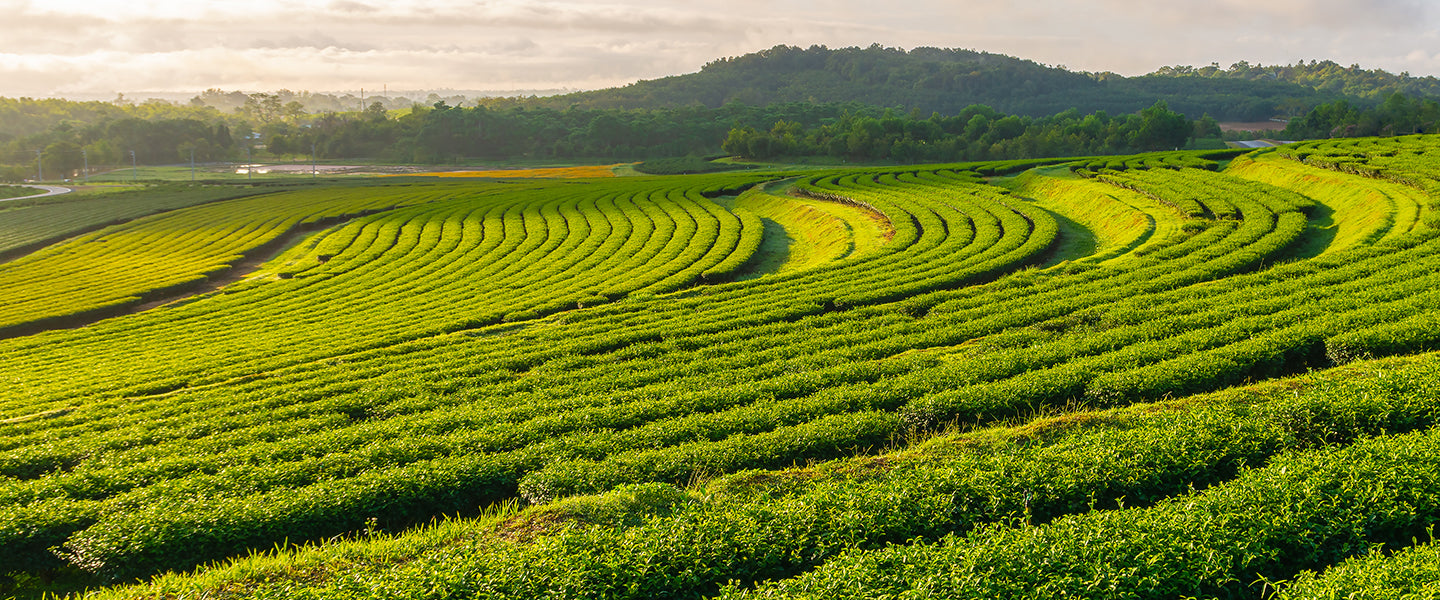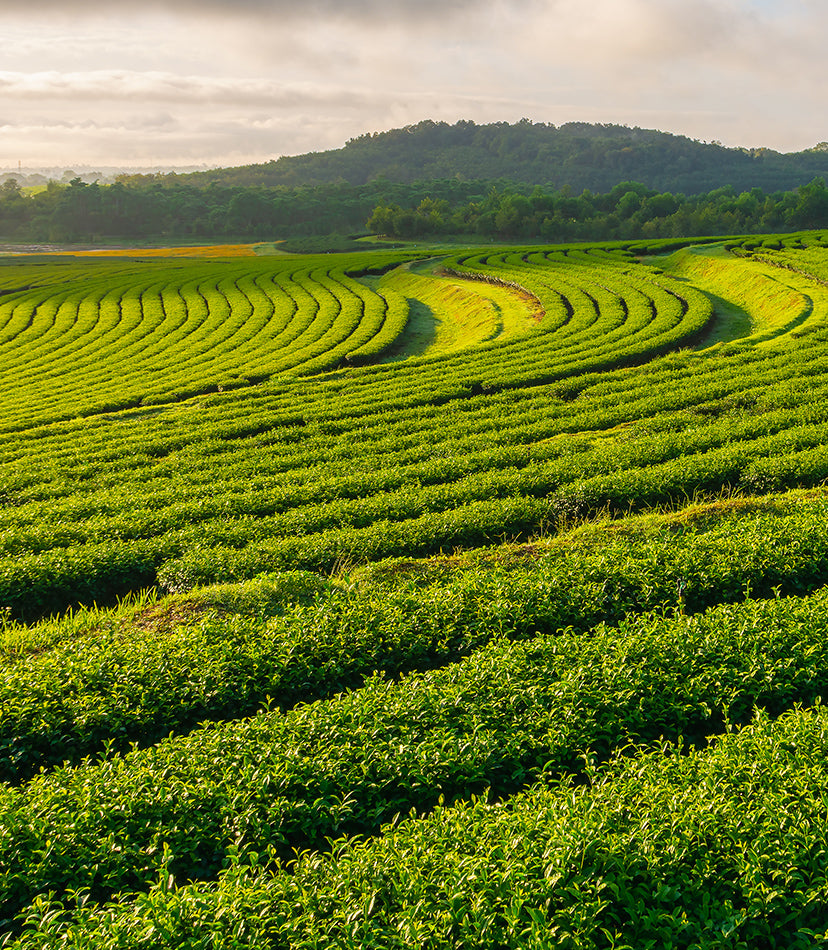Wild India
Our Summer Lip Veil collection was inspired by the vibrant colors of India – a country that Ruth Ganesh of Elephant Family knows well. On her frequent trips for Asian elephant conservation, Ruth builds in time to experience some of the country’s other wild offerings. Here, she shares some of her must-see places.
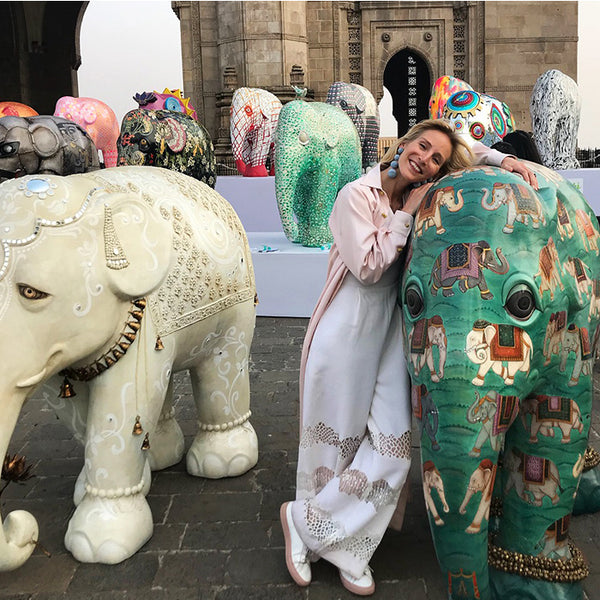
Other than its elephants, what about India enchants you?
The intoxicating color combinations. Everything is decorated. Even the most functional mechanical equipment is hand-painted with flowers and messages. Bulldozers charge at the road covered in glitter and tinsel. You can go to the driest conference or meeting and the women are wearing pops of yellow and pink and red and every color under the sun. It’s impossible not to be swept along with it. They are a nation of colorists.
How often do you travel there?
These days I spend about a quarter of my year there. I used to spend a lot of time in Assam in the far northeast when we were working on reconnecting four forest fragments outside of Kaziranga National Park. There’s around 5,000 elephants in that area, but so much vegetation you don’t always spot them – maybe just an inquisitive trunk or a big flapping ear!
Is there a responsible way to see elephants in India?
Absolutely there is. If you go and see the wild ones, they are so thrilling to spot. Corbett National Park—India’s oldest, in Uttarakhand—is a stunning landscape in which to see elephants; they can look like tiny dots in comparison to the mountains rising up behind them.
Or explore Kaziranga National Park in Assam—fly into Gwhati airport, then drive out for about 4 hours. It’s a UNESCO world heritage site and utterly breathtaking. It’s also home to the largest population of tigers in the world. If you take a boat trip down the Brahmaputra River, you will see river dolphins and elephants and even sometimes tigers. So much better than a noisy, jolty jeep.
It’s a nice option to stay at one of Assam’s many divine, lush tea plantations. You feel like you’re traveling back in time in the charming colonial-era hotels scattered throughout the area. Wild Mahseer, an old-world boutique resort, was cultivated by British planters in the 1800s. Aside from tea tours, you can even go dolphin-watching on the Brahmaputra River. Diphlu River Lodge, on the periphery of Kaziranga National Park, is also lovely—it’s where Will and Kate went to on their trip to Assam back in 2016—with a more rustic, yet luxurious, feel.
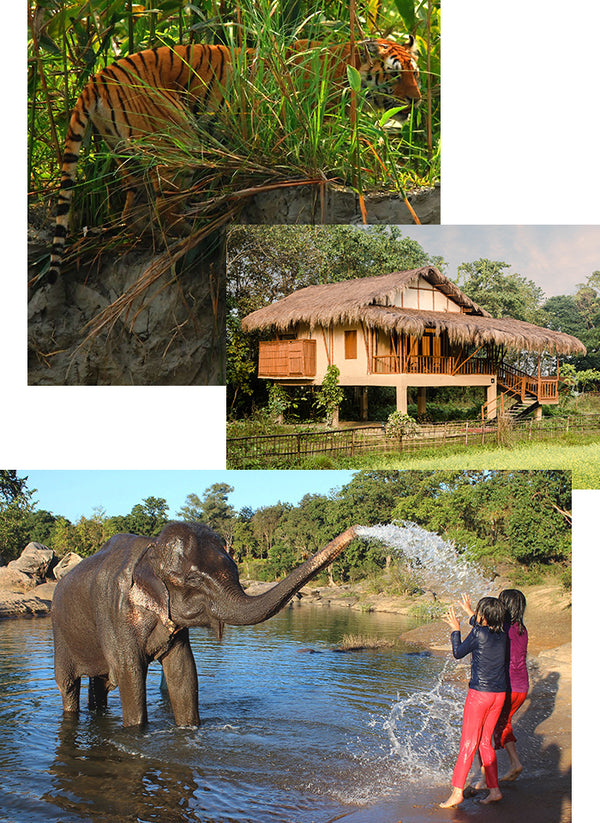
Any other wildlife experiences you’d recommend?
I’d love to put in a word for Kipling Camp in Madhya Pradesh, as it’s where our founder Mark Shand’s elephant, Tara, has lived since being rescued—it’s absolute heaven. [Shand’s best-selling book, Travels on my Elephant, described how he saved Tara from cruel keepers and traveled 600 miles across India with her.] Kipling Camp is also run by an eminent tiger conservationist, Belinda Wright. You see that all of Mark’s stories about Tara are actually true when you meet her – she really does pedicure her nails after a bath with a stick, and is a sort of fat happy Labrador of an elephant, with two mahouts (one for daytime one for night time) tending to her every need.
Your husband is Indian. Where is he from and do you have any inside-track must-sees?
He is from Chennai in the south and his parents now live in Pondicherry, a former French colony, which is close by. The city is teeming with architectural gold! Strolling around the bougainvillea-speckled streets, it’s hard not to be dazzled by the city’s delightful blend of French Colonial and Franco-Tamil architecture, its enchanting pillared walkways and quaint arches, all bookended with quintessential Pondicherry homes featuring several vibrant exteriors of yellow. Oh and certainly make time to eat at Palais de Mahe!
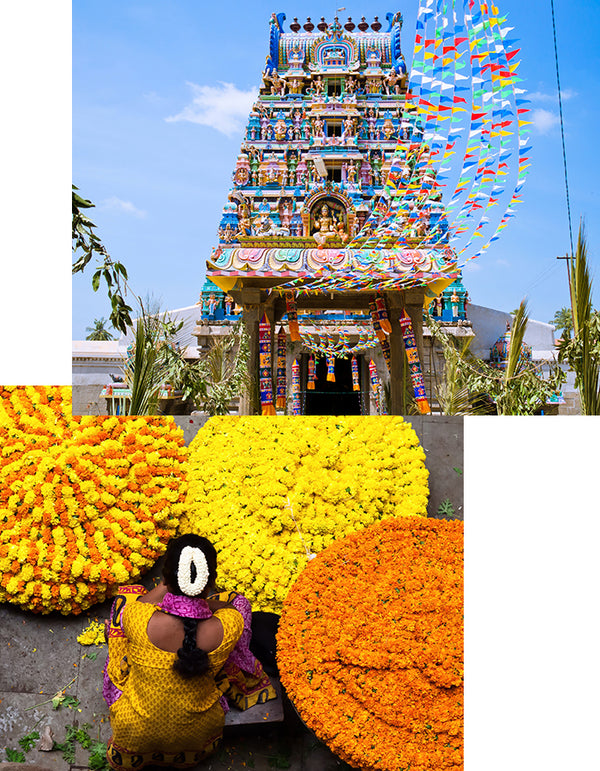
What are some of your other favorite places in the world to visit and why?
It must be part of getting older and more conscious, but these days any wild landscape that can be reached by car or train gives me the most joy. The inner and outer Hebrides off the West coast of Scotland are my all-time happy spot. I feel wild and free up there—there’s a sense of being so very far away; you find yourself running down hills with your arms flung wide! The air smells sweet from the pines when you step out of the car, the grasses are long and wild, and my doggies behave so differently here; you can see the untamed nature of it infects them, making them fully unleash their canine spirit! I love landscapes where you can imagine what they might have been like at the beginning of time—the book of Genesis—before humans and sheep tamed them.
What are your packing essentials?
I’m glad you asked this – I’m going to write the list of things I always forget but are always essential in the hope next time they make the cut!
- Lip balm
- Jungle Formula insect repellant
- Phone charger!!!
- And around 4 bright white shirts that never fail to test the washing machine on return.
What’s your favorite souvenir or bring-back from your trips to India?
Usually, fluorescent plaster of Paris, utterly kitsch Ganesh statues! You can see Sgt. Pepper in every one. The word "groovy" ends up back in your vocab when you find these beauties. The state of Odisha has the best roadside Ganesh sellers—you pass through luminous jungle, past full-color [UK designer] Luke Edward Hall-style temples, then chance on a man by the side of the road with 20 fluorescent Ganeshes. Magical Mystery tour all the way!
Shop This Story
Photos from top:
Corbett National Park; Ruth Ganesh at the Elephant Parade event at the Gateway of India in Mumbai; a riot of flowers; a rickshaw in Pondicherry; tigers at Diphlu River Lodge; a room at the Lodge; Tara the elephant at Kipling Camp; tea plantation in Assam; a temple in Pondicherry; a flower vendor.
